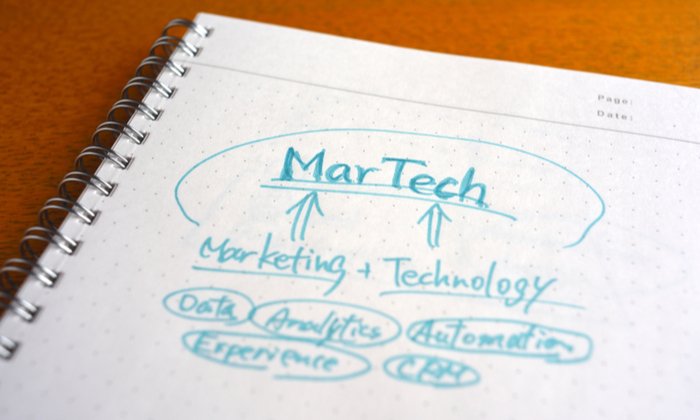How to Build a Marketing Technology (Martech) Stack That'll Grow With You

By Lisa Nikolau
What will your marketing team look like six months from now? Or a year from now? How many people will you add? What new tools, systems, and data will you need?
There are a lot of potential questions you can ask about the future of your business, but there is one certainty: you’ll deal with more data, more people, more processes, and more complex problems as you grow.
But how do you deal with that in your marketing team? That’s where marketing technology, or martech, comes in. By automating tasks and removing obstacles from your team’s workflows, marketing tech empowers your team to waste less time on menial tasks, allowing your business to grow more efficiently.
When you put it all together, you get a marketing technology stack: a collection of tools that your team uses to do their best work every day.
As your team and business scales, it’s important to create a martech stack that streamlines your day-to-day processes. In this post, we’ll go over everything you need to know about martech and how to build a marketing tech stack that will stay with you as you grow your business.
Marketing technology can be used by any type of marketer — even non-digital marketers. One martech tool is typically used for a different marketing discipline.
Here are a few examples of disciplines and a martech tool that can be used for them.
- Search Engine Optimization (SEO): A keyword research tool such as Moz is an example of a martech tool for SEO.
- Content marketing: A content management platform such as CMS Hub can be used for content creation.
- Social media marketing: A social management platform such as HootSuite is an example of a martech tool for social media marketing.
- Search Engine Marketing (SEM): Google Ads is an example of a martech tool for SEM.
- Event marketing: A lead collection software like the one included in Marketing Hub can be used for lead capture during an event.
- Advertising: A programmatic ad platform such as mediasmart is an example of a martech tool for advertising.
Instead of adopting a plethora of different tools, some marketers choose to adopt an all-in-one solution such as Marketing Hub.
How is technology used in marketing?
Technology is used by marketers to execute their marketing campaigns. Marketers use software to automate marketing tasks and collect data so they can get insights related to campaign activity and their impact on customers.
For example, say that your team spends a significant amount of time emailing customers. The action feels repetitive, and it’s keeping people away from more pressing assignments. You may choose to use an email automation software, so less time is spent sending emails.
You also want the software you use to track data related to those emails, so you gain an understanding of how your users interact with …read more
Source:: HubSpot Blog






